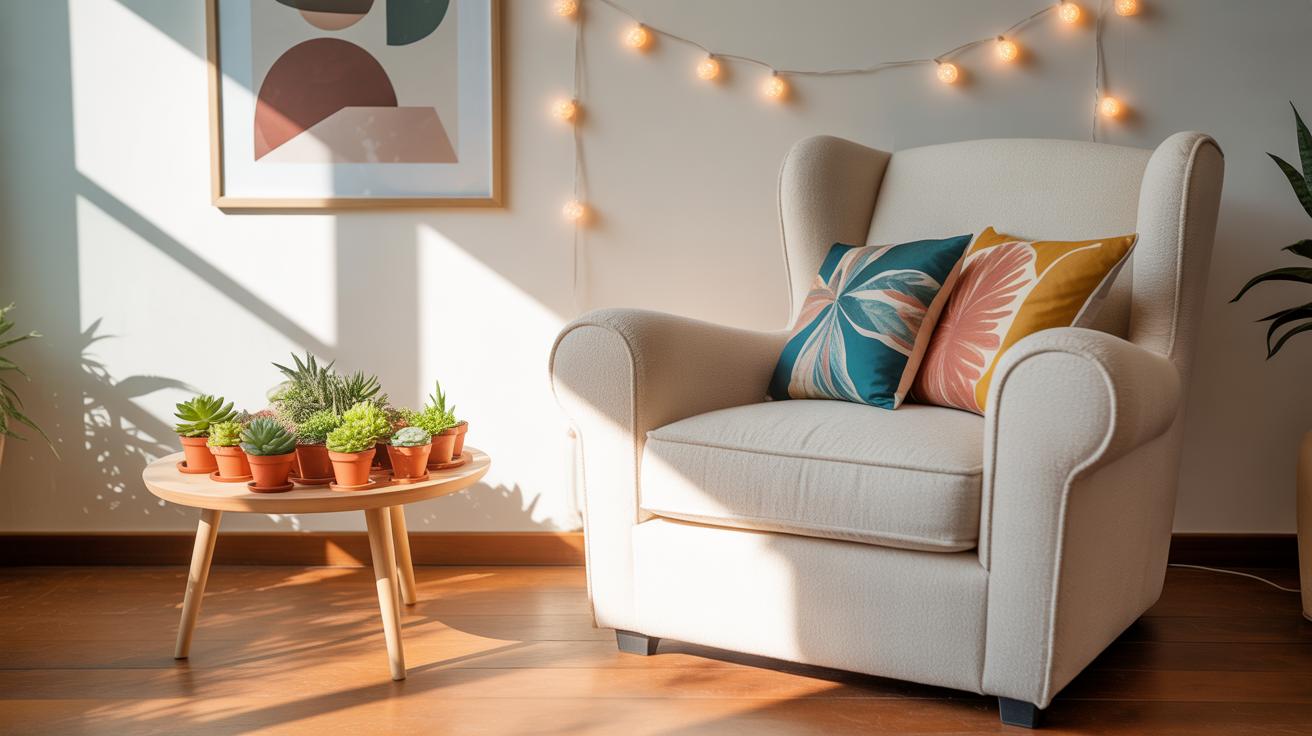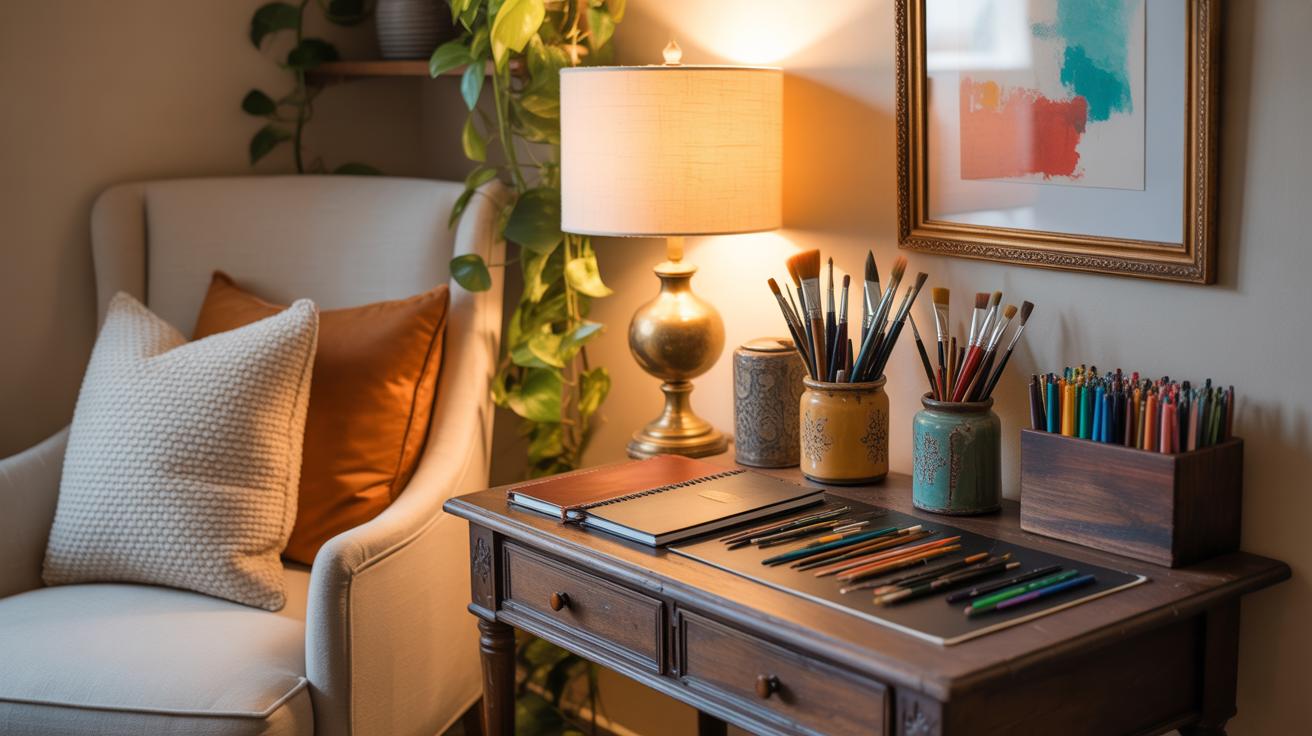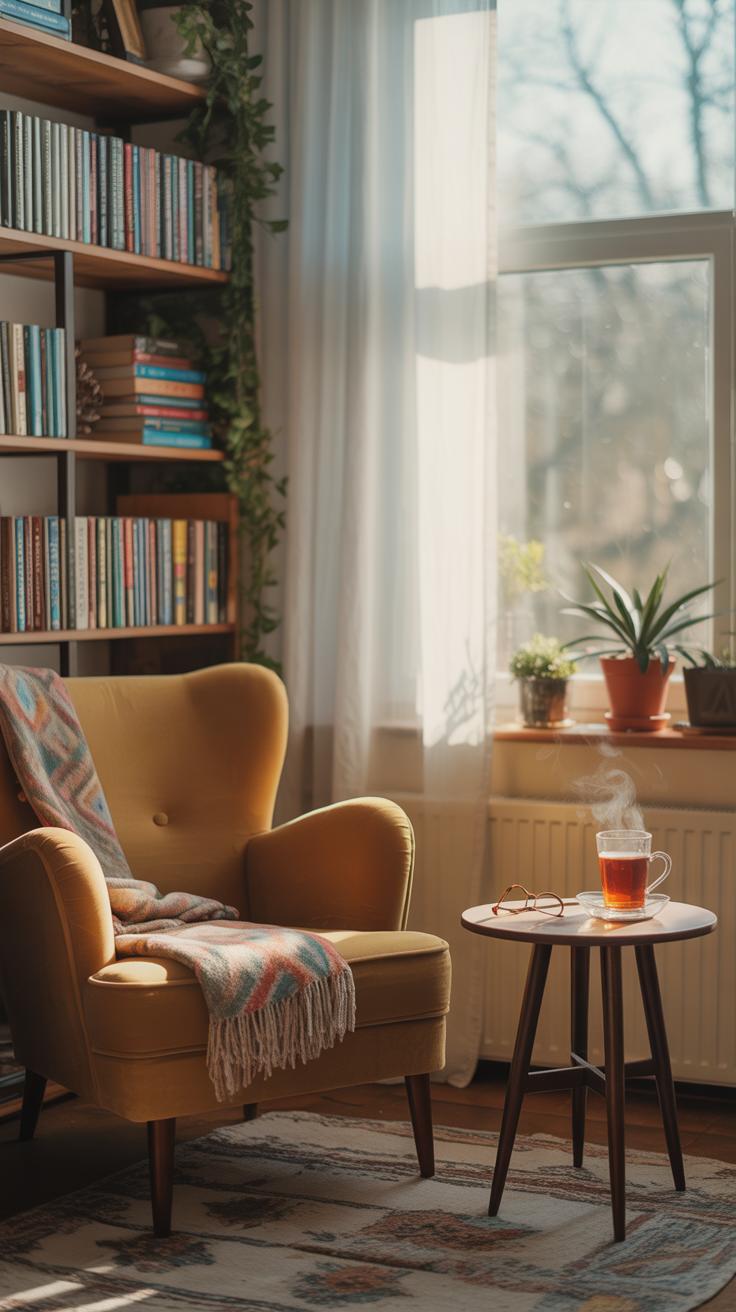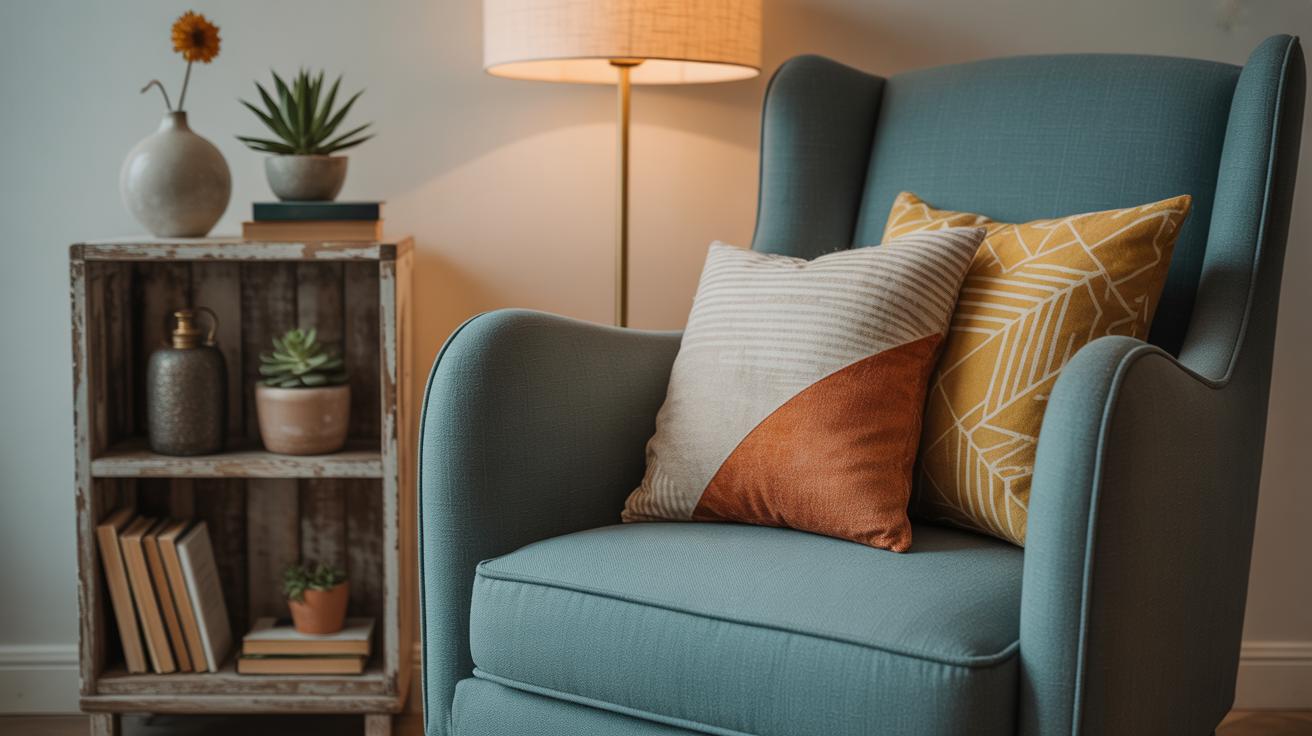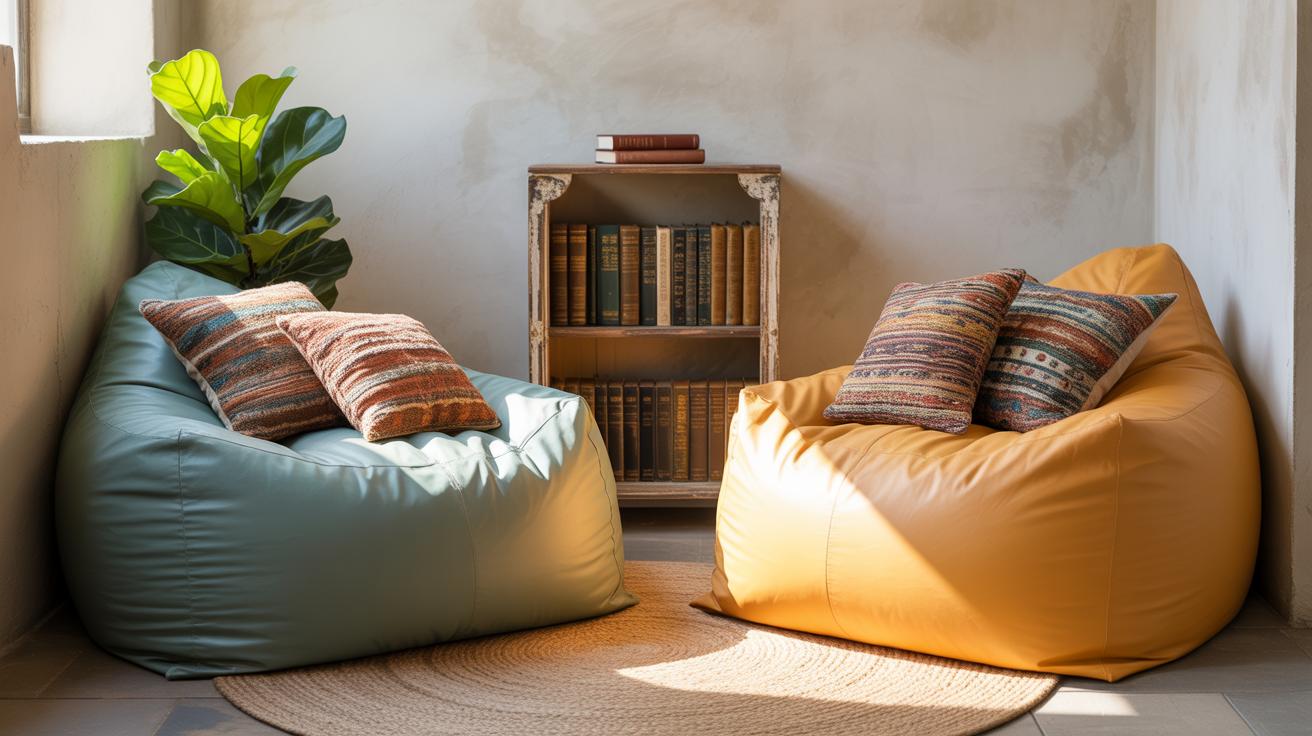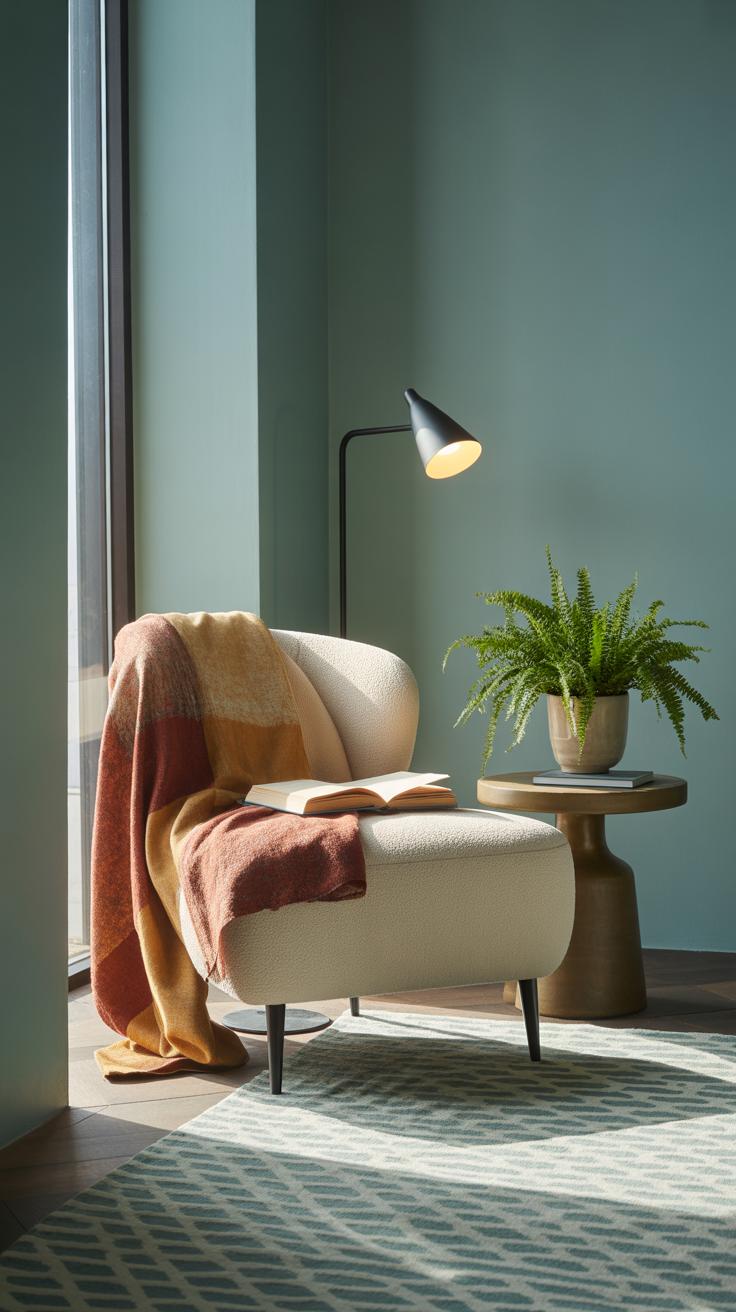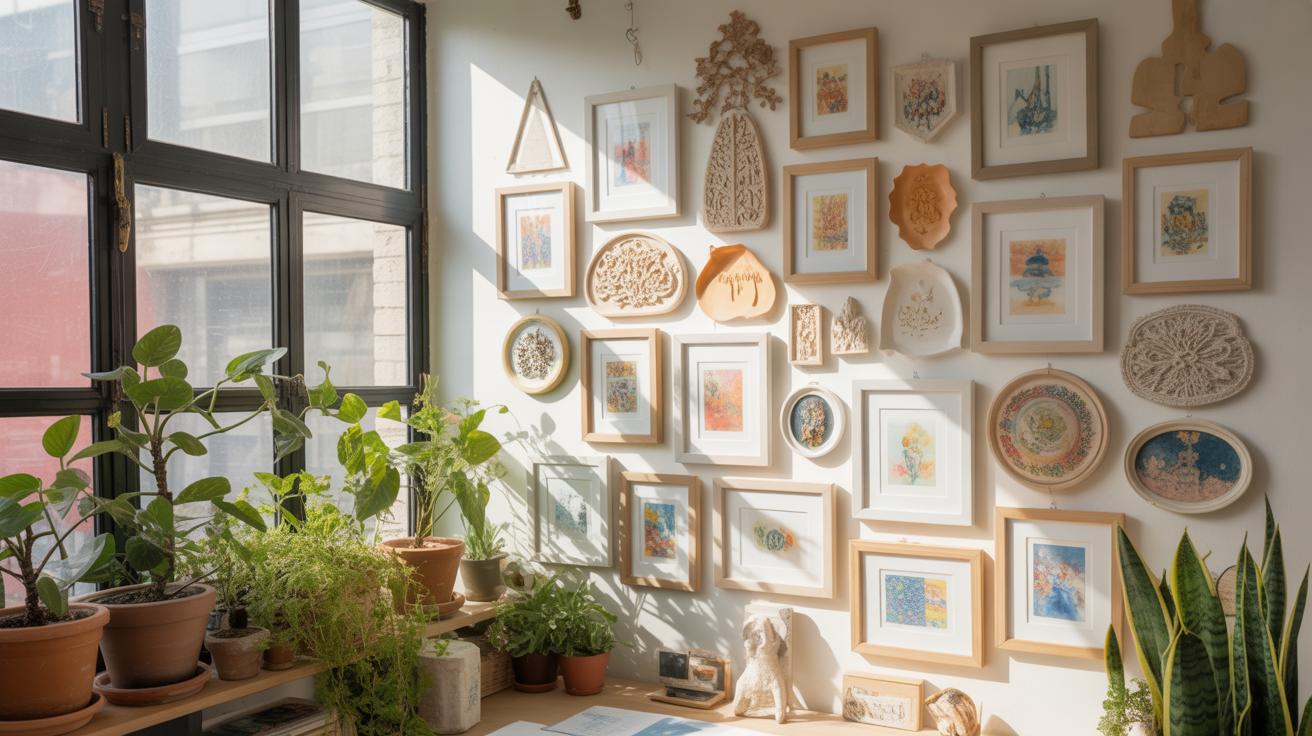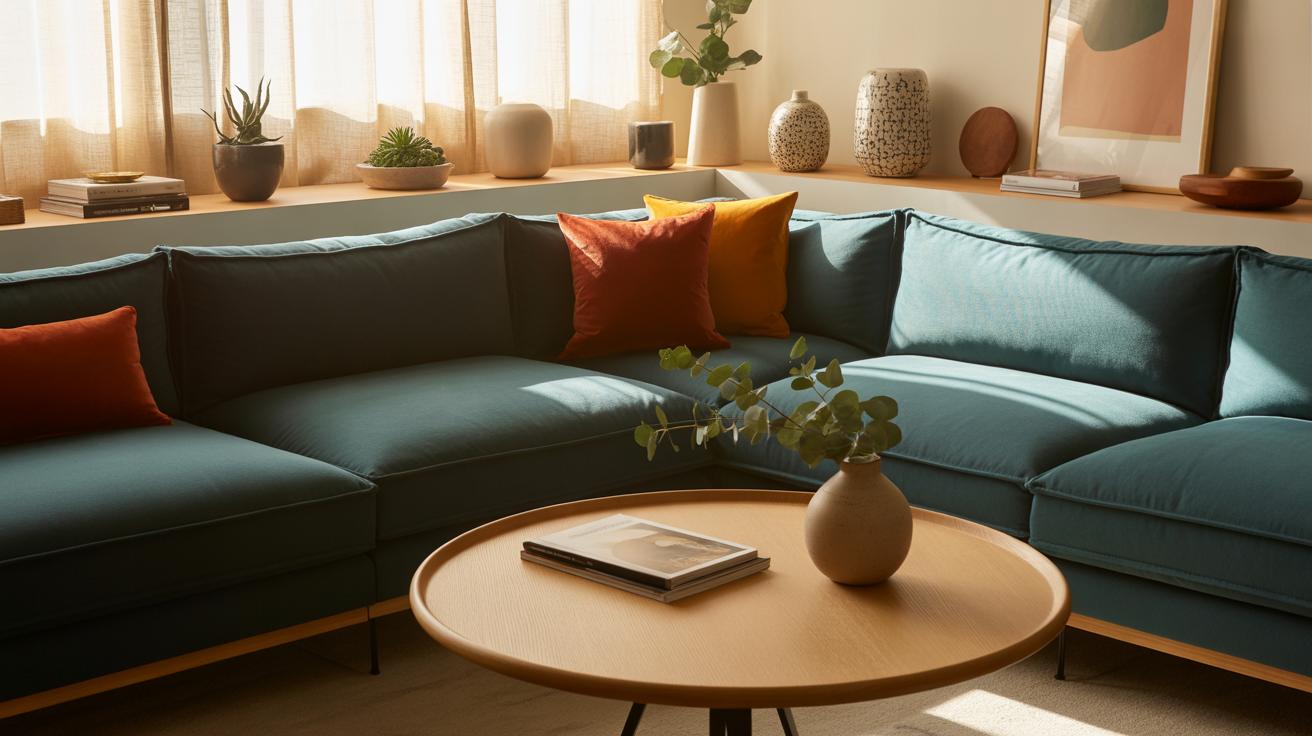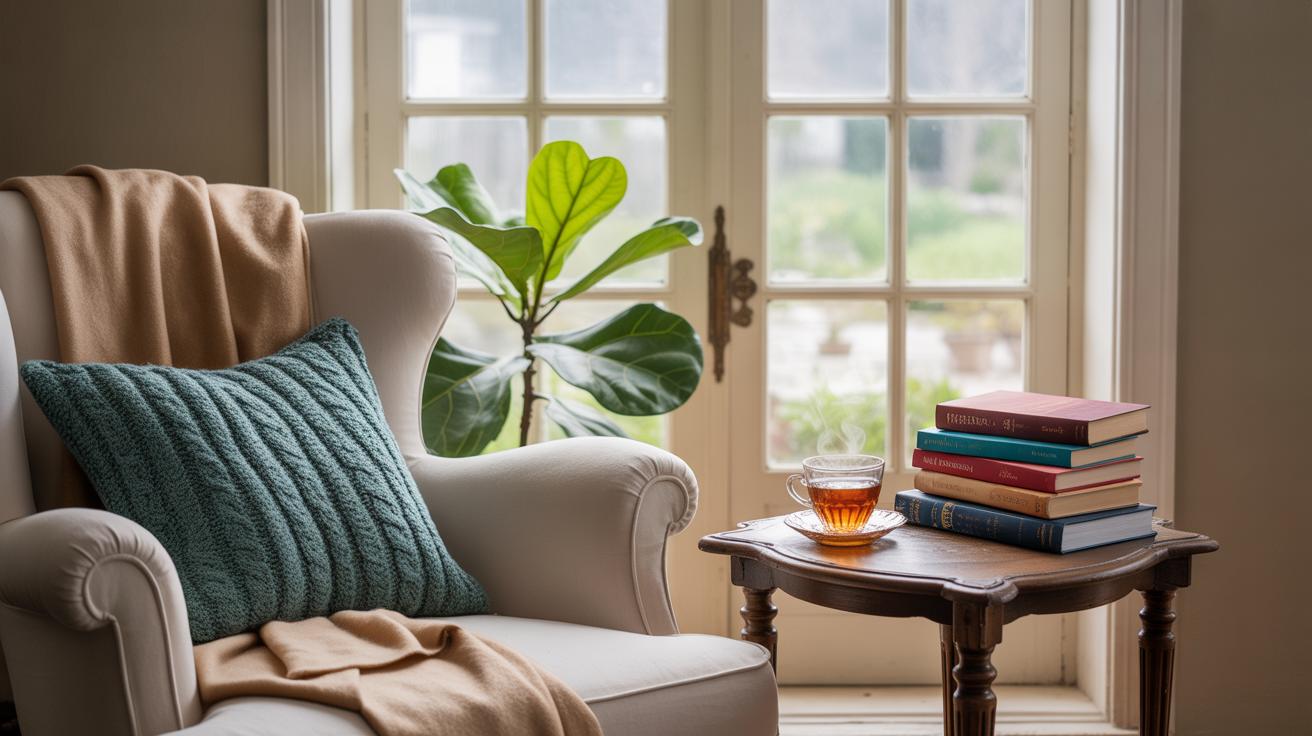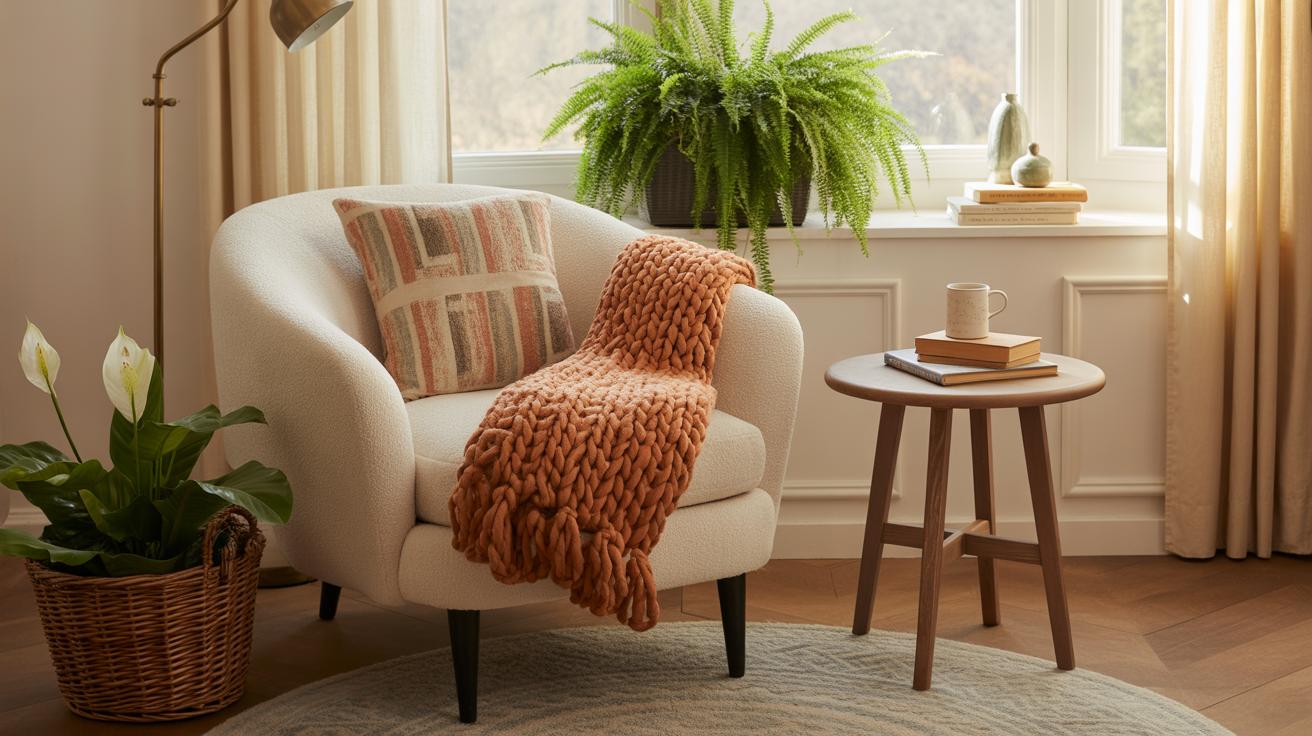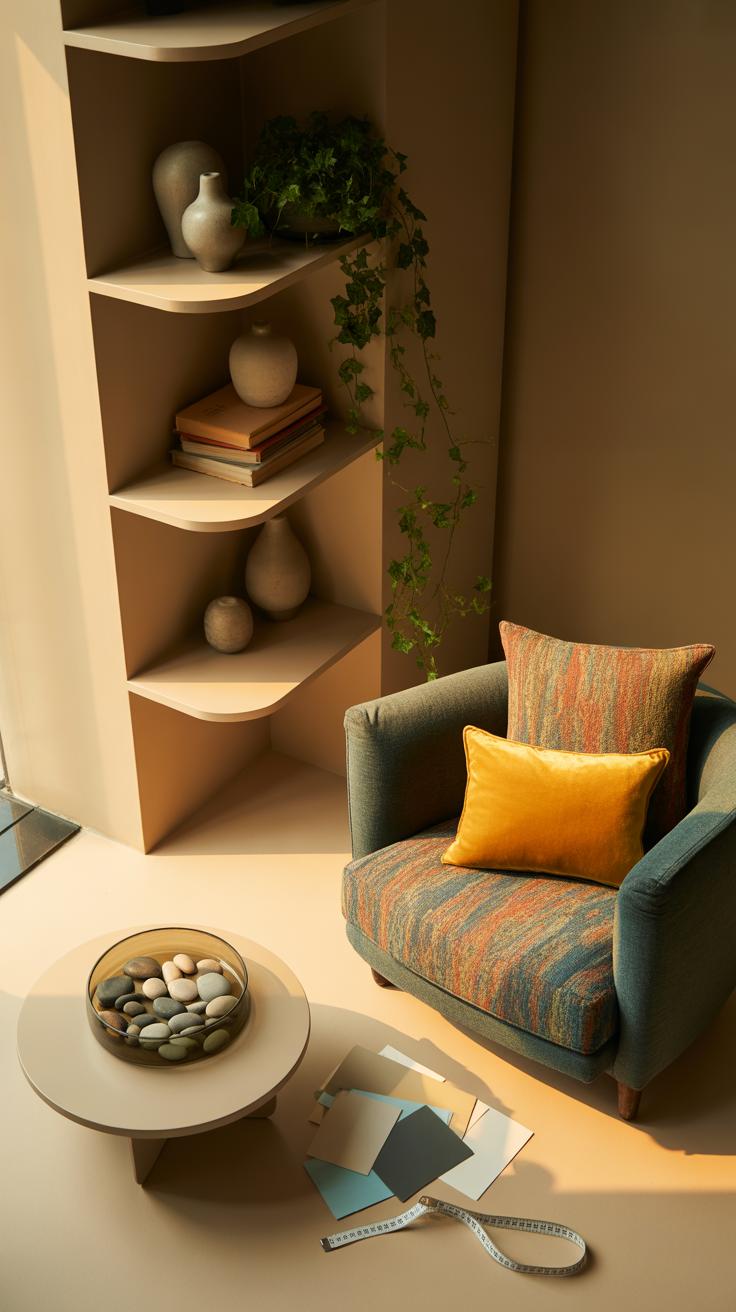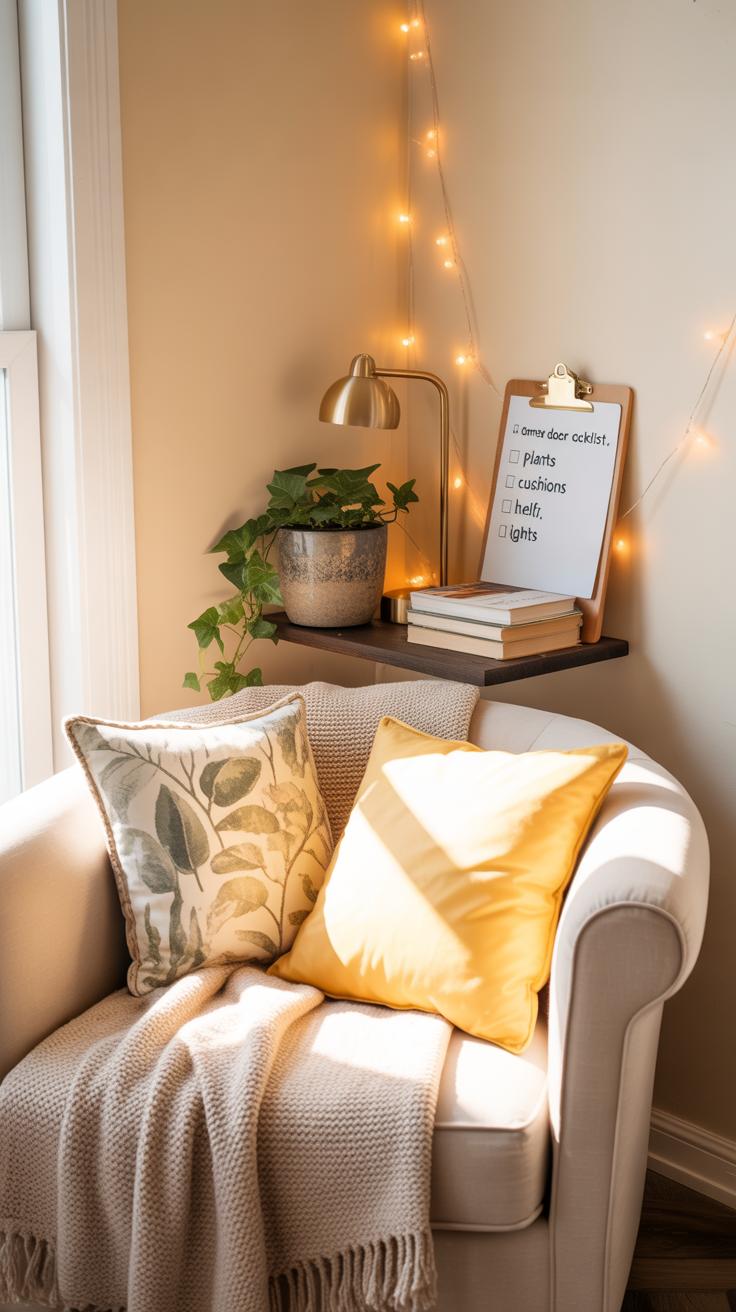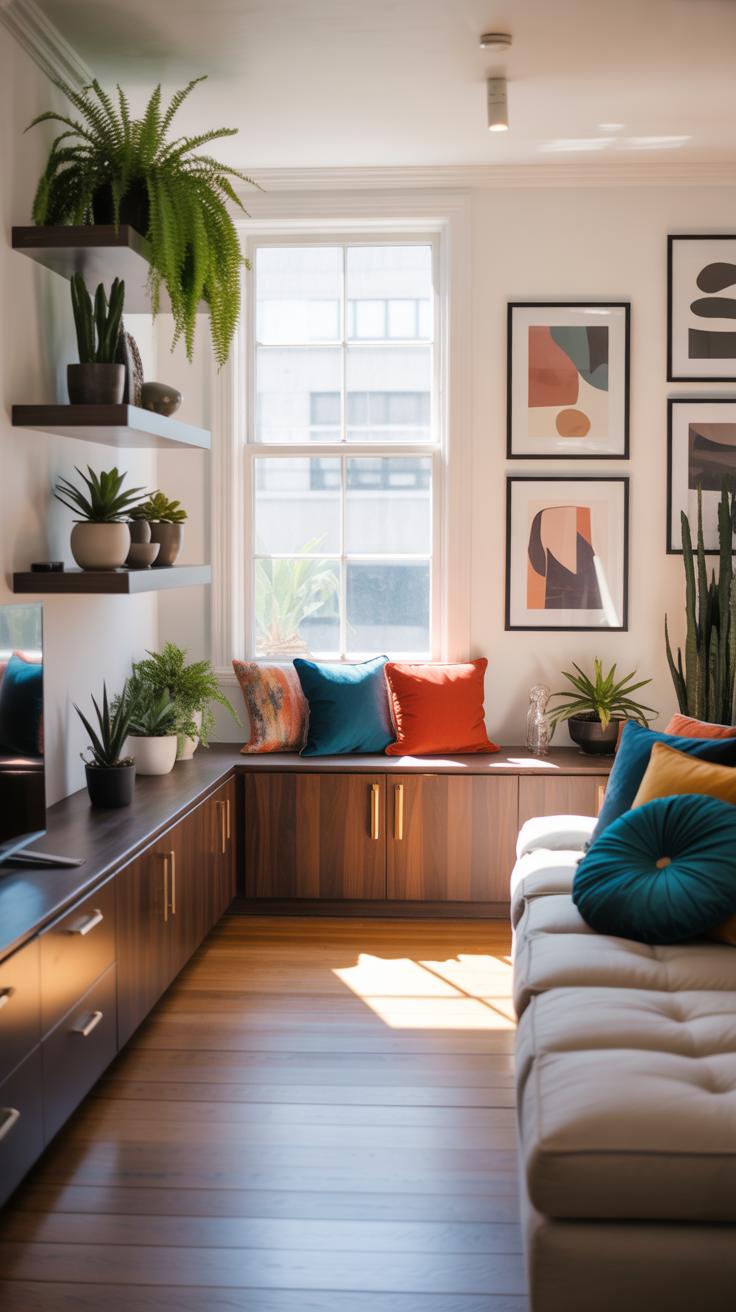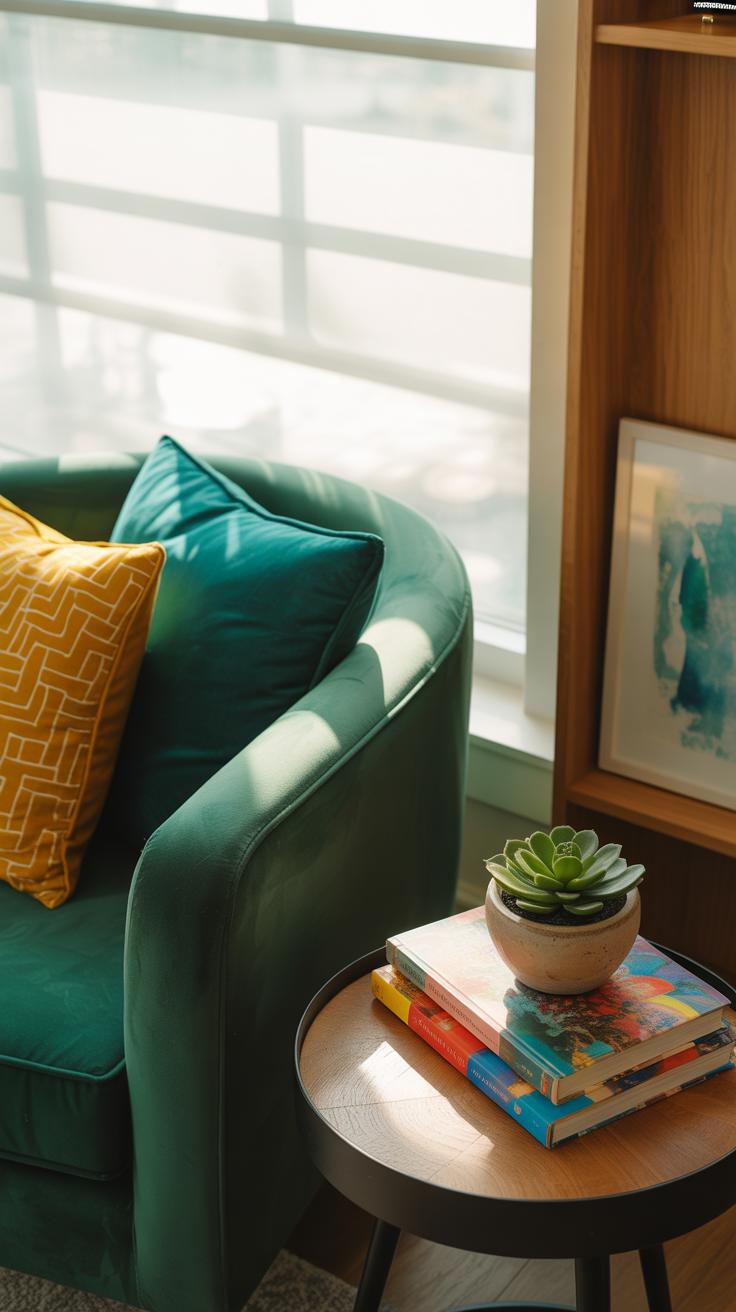Introduction
Creative ideas for small corner decor to enhance your space help you make the most of neglected areas in your home. Small corners often remain empty or cluttered, but with the right design, they can become valuable parts of your living space. Making use of these areas adds personality and function to your home.
In this article, you will learn how to use small corners effectively. We explore ways to decorate and organize these spaces, helping you add style and purpose without overwhelming the room. These tips help you transform small corners into cozy reading nooks, storage zones, or decorative displays.
How to Measure Your Small Corners
Measuring small corners before you start decorating might seem straightforward, but it’s actually a step you don’t want to rush. Getting the dimensions right helps you avoid buying pieces that won’t fit or leaving awkward gaps that waste space. You need to measure the length of each wall forming the corner, the floor area within, and the height—especially if you’re planning to add tall elements like shelves or plants.
Start with the walls: place your tape or laser measure at the corner’s edge and stretch it along the wall until you reach the desired point or the end of where you want to place decor. Do the same for the adjacent wall. Next, measure the floor area carefully. Try to visualize where furniture or art will sit to capture the usable space rather than just the total floor. Don’t forget to check the height from floor to ceiling, and also note if there’s a slant or an obstruction like a beam.
Depending on your type of corner—whether it’s an inside corner between two walls or an outside corner, like near a window ledge—the way you approach measurements might change slightly. Inside corners need precise wall lengths, while outside corners might require gauging depth more carefully to avoid blocking walkways.
Tools Needed for Measuring Small Spaces
For these tasks, a simple tape measure usually does the trick. If you don’t have one, a string and a ruler can work in a pinch, though it’s less precise. For a bit more accuracy, especially in tricky spots, a laser distance meter is great—it gives quick readings and reaches corners at awkward angles. Plus, some laser meters store multiple measurements, which can be handy if you forget numbers easily. A pencil and notepad for jotting down each measurement help too; you might want to sketch a rough corner layout.
Common Measurement Mistakes to Avoid
People often misread tape measures or forget to add small adjustments, like baseboards or molding thickness. It’s easy to measure only one wall and assume the other is the same—an error that can cost you space. Also, measuring in the wrong units or mixing centimeters and inches causes confusion later on. Another common slip is ignoring irregularities, such as angled walls or uneven floors, which throw off fitting shapes or furniture.
To prevent mistakes, double-check your numbers, measure twice or even thrice if unsure, and compare your notes carefully. Don’t rely only on memory—the walls don’t always align perfectly, and that small difference might matter more than you think.
Selecting Decor Based on Corner Function
When deciding what to put in a small corner, think first about what you want it to do. Is it for storage, maybe? Or something to display your favorite items? Perhaps a quiet spot for sitting—like a tiny reading nook? The function really guides the style you choose, but it isn’t always straightforward. For example, a corner shelf for books could look messy if not arranged well, but a glass cabinet might feel too bulky or formal for a casual vibe.
Matching function with style means finding that balance between usefulness and how you want the corner to feel. A vintage wooden cabinet might be gorgeous and great for storage, but is it too dark or heavy for the space? Sometimes lightweight, open shelves suit better in smaller or brighter rooms. If you want seating, a small cushioned bench can add comfort but might clash with sleek, modern decor unless carefully chosen.
I’ve often hesitated between pieces that look great and ones that serve well. You might find yourself pulling things back out to try again, wondering if a simple stool would do better than that fancy armchair that takes up too much space. It’s almost like the corner has its own personality, nudging you to pick something that fits just right—even if you’re not sure exactly what “right” means at first.
Storage Solutions for Tight Corners
Small corners often feel wasted, but they don’t have to be. You can install narrow shelves, angled cabinets, or even corner-mounted cubbies to use that space smartly. For example, a floating corner shelf can hold plants or keys without taking floor space. If you need more closed storage, a triangular corner cabinet offers hidden space for small clutter.
I liked the idea of corner storage until I tried fitting a bulky unit and realized it blocked light or made the area feel cramped. Slim, tall storage units might work better. Even corner drawers come in handy if you don’t want to lose that neat look but still crave functionality.
Think about what you’ll store there. Books? Office supplies? Kitchen items? Different needs call for different storage shapes and styles. A small laundry room corner works well with stackable bins, while a living room corner might benefit from open shelves to display decor or photos.
Decorating Corners for Relaxing Spaces
Turning a small corner into a relaxing spot is trickier but rewarding. A comfy chair or bench with soft cushions offers a mini retreat in your home. Adding a floor lamp or a small table lamp can make the spot feel cozier, inviting you to linger there. But lighting matters—you want something bright enough for reading but gentle enough not to jar you.
Sometimes a wall-mounted lamp or fairy lights do the job better than clunky floor lamps that crowd the space. Also, think about adding a small rug or throw blanket to soften the corner and pull it all together.
I tried making a reading nook once with a chair and bright light but felt it was too harsh. Swapping to a warm-toned bulb changed the whole mood. These little choices matter more than you might expect when decorating a corner meant for relaxation.
Choosing Colors and Lighting for Corners
Small corners can feel boxed in or overlooked if you’re not careful with colors and lighting. The choices you make here can actually open up the space—or make it feel even more cramped. It’s surprising how a simple shift in hue or the right angle of light can change everything.
Lighter shades usually do the trick for making corners look bigger. Whites and soft pastels reflect natural and artificial light well, which bounces around the area and brightens it up. But, you might wonder: could too much brightness wash out the personality? Maybe. That’s why subtle contrast—like a pale blue next to warm neutrals—can add depth without shrinking the space.
When it comes to finishes, semi-gloss or satin paint helps because they reflect light without the harsh glare you get from gloss. Matte finishes soak up light and can sometimes make a corner feel dull or enclosed. Still, if you want a cozy vibe, a flat finish might fit better—though it won’t enlarge the area visually.
Lighting plays a key role here. Dim overhead lights often leave corners in shadows, defeating your efforts. Instead, think about using wall sconces mounted just right to wash light downward or upward. They don’t take up floor space and can create a tempting, inviting glow.
LED strips are another option. They’re slim, can fit tight spaces, and offer a modern touch. Placing them along shelves or behind small furniture pieces can push the walls visually outward. I once tried LED strips under a corner bench, and it felt like the whole nook expanded dramatically.
Can you imagine small corner plants thriving under well-placed light? Or a reading spot in an otherwise ignored fragment of a room? Choosing the right colors and lighting isn’t just about aesthetics—it’s about making that overlooked space work better for you, feel bigger, and maybe a little bit brighter in your day.
Furniture Options for Corner Spaces
Choosing furniture for small corners isn’t always straightforward. The trick is to think about how much room you actually have and what you need from that space. Sometimes, a bulky piece can overwhelm, but a well-chosen item can quietly transform a neglected nook.
Here’s what I’d suggest considering first:
- Size: Measure your corner carefully. A narrow triangular space may only fit a tiny shelf or a slim chair. Don’t assume that because it’s a corner, any furniture will fit there comfortably.
- Shape: Curved furniture often fits more naturally into corners with odd angles, like rounded corner cabinets or semicircular tables.
- Purpose: Decide if the space is for storage, seating, display, or a mix. That will guide whether you pick a cabinet, a comfy chair, or a small workspace.
Personally, I find corners ideal for pieces that feel like they belong there, almost hiding in plain sight. Try to avoid oversized furniture that demands attention—it usually doesn’t belong in a corner meant for subtle use.
Compact Chairs and Tables for Corners
Many small chairs or stools work great in limited corner spaces. Think about folding or stackable stools that can tuck away when not in use. A petite side table, maybe just 12 to 16 inches wide, can hold a lamp or your coffee without crowding the room.
I once bought a simple armless chair with skinny legs for a corner reading spot. It was light enough to move, yet sturdy. Adding a tiny round table beside it completed the little setup. You might like stools with built-in storage or a small table with drawers for extra function.
Look for furniture with slim profiles and minimalist designs. It’ll keep the corner feeling open and not cramped, though sometimes a taller stool or table can lend unexpected visual balance.
Shelving Units and Cabinets for Corners
When it comes to shelves and cabinets, corners offer an opportunity to stretch vertically or snug in deeper storage. Triangle shelves or L-shaped units can occupy the entire corner height without invading the room.
Floating corner shelves are another option, especially for displaying plants, books, or decor. They don’t take up floor space, which is a huge plus if every inch counts.
If storage is what you need, slim corner cabinets that rise upwards can keep things neat. Choosing pieces with doors hides clutter and can make the space look a bit cleaner. Open shelves invite a casual look but demand more upkeep.
For tight spots, anything modular or customizable feels less committing—you can adjust layouts as your needs change. Have you tried mixing open and closed shelving? It breaks the monotony and offers a practical way to manage visible and hidden belongings.
Decorative Elements to Enhance Corners
Small corners can feel neglected, but a few thoughtful decorative touches can completely change that—without making the space feel cramped. Think beyond just filling the spot and focus on what adds style while keeping the area open and inviting.
Using Plants to Add Life to Corners
Plants are a natural fit for corners, offering a bit of greenery that can soften edges and refresh the vibe. But not every plant works well in corners; you have to consider light, size, and shape. For example:
- Tall, slender plants like snake plants or fiddle leaf figs fit snugly without overwhelming the space.
- Trailing plants, such as pothos or ivy, add interest when placed on a floating shelf or a hanging planter.
- Compact succulents or cacti work well on small side tables or window-corner ledges.
Displaying them creatively can make a difference. Try stacking pots vertically or using plant stands with varying heights—it’s surprising how this little variation changes the whole feel. Personally, I find that a cluster of three plants at different levels brings a casual but deliberate look.
Adding Art and Mirrors for Visual Interest
Art and mirrors do more than decorate; they have a subtle way of altering how you see the space. A bright or detailed art piece draws your eye, making the corner feel purposeful. Sometimes, picking a smaller or narrow portrait can fit the corner’s dimensions better—too large and it just feels out of place.
Mirrors are especially interesting because they literally expand the space visually. Even small corners benefit from mirrors placed at angles that catch light or reflect parts of the room you want to highlight. A round or uniquely shaped mirror can add character without taking up surface area.
You might wonder if too many elements threaten to clutter the corner. That depends on scale and placement—sometimes less feels more, but a well-chosen mirror or art piece can make the corner pop without overwhelming it. It’s a bit of trial and error, but you’ll find a balance that fits your style and room size.
Small Corner Decor Mistakes to Avoid
Overfilling Your Corner Space
Small corners can feel cramped very quickly if you pile on too many items. It’s tempting to fill every inch, especially when you want to make an impact, but clutter often kills the vibe. A cramped corner feels suffocating rather than cozy. If you’re like me, you might start adding little things here and there—books, plants, trinkets—but before you realize, the space looks more chaotic than charming.
To avoid this, try focusing on just a few statement pieces. Think about the essentials: a small plant, a neat shelf, or a single piece of art. Leave some breathing room around those items. Simple is usually better with these tiny spots. You could always rotate decor seasonally if you like a change without overcrowding.
Ignoring Function in Favor of Looks
It’s easy to get swept up by how cool or trendy a corner looks. But if that corner only serves as a display and nothing else, what’s the point? Small spaces need to double up on usefulness. Sometimes I forget this myself—choosing a stylish chair that’s too bulky or a decorative table that isn’t stable. It’s frustrating when something looks great but ends up unused.
Function matters here. Ask yourself what the corner will do: Is it a reading nook? A storage spot? A place to relax? Strike a balance by blending style with purpose. For example, a slim bookshelf that holds your favorite titles but doesn’t overwhelm the space. Or a chair that’s sleek and comfortable. Stylish corners that can’t perform their intended role usually just become dust collectors.
Cost Considerations for Corner Decorating
When thinking about decorating a small corner, budgeting often feels tricky. You want something that fits the space and looks good without breaking the bank. But it’s not just about spending less; it’s also about where to spend wisely. Small corners can benefit from both affordable touches and selective upgrades, depending on your priorities.
For budget-friendly ideas, look at simple yet effective options like floating shelves, small plants, or a cozy pouf from a discount store. These can reshape a corner without much investment. DIY projects work well here, too—painting an old stool or making a wall hanging can personalize the space without costing much. Sometimes, thrift shops can surprise you with hidden gems if you keep an eye out.
On the other hand, there are moments when investing in higher-quality pieces makes sense. Think about items you’ll use often, such as a well-crafted reading chair or a sturdy corner desk. These tend to last longer and sometimes even improve with age. A premium lamp or a unique art piece might feel expensive upfront, but it adds a certain presence that cheaper items can’t match.
You might wonder when spending a bit more is justified in a small corner. Usually, if a piece anchors the area and supports a specific function—like work or relaxation—it’s worth considering quality. How much you invest depends on your lifestyle and how often you interact with that corner, really.
StepbyStep Corner Decor Setup Checklist
Planning and Measuring Your Corner
Start by measuring your corner carefully. Don’t just eyeball it—you’ll want to know exactly how much space you have to work with. Width, height, depth… jot it all down. These numbers will guide your decisions about furniture size and decor placement.
Next, think about what you want this corner to do. Should it be a reading nook? A mini home office? Maybe a place to display plants or art? Your choice will shape everything that follows. Sometimes, deciding the purpose is harder than it sounds—perhaps you want multiple uses in a small spot, which means balancing your options.
Consider the light too. Is the corner naturally bright or dim? Knowing this early helps you avoid putting a plant in a gloomy spot or placing a desk where shadows make work annoying. Sometimes light changes throughout the day, so be aware of that as well.
Placing and Adjusting Decor Items
Once you’ve picked out furniture and decorations, it’s time to arrange them. Don’t rush. Place items loosely at first, then shift and tweak. For example, a small side table might look fine in one spot but feel cramped in another.
Try different layouts before settling. Sometimes what seemed perfect on paper doesn’t translate well in reality. I remember moving a chair three times before it “just clicked”—and that was after a whole afternoon of trial and error.
Lighting comes next. Add a lamp or a light strip, then test how the corner looks throughout the day and night. Small corners often feel claustrophobic, but the right lighting can open them up—if you find what works, that is.
Finally, step back regularly and ask yourself if the setup feels inviting and functional. If something feels off, don’t hesitate to adjust again. The process isn’t always smooth, but that’s part of the charm.
Comparing Open vs Closed Corner Decor
When deciding how to dress up a small corner, the choice often comes down to open versus closed setups. Open corners typically feature items like visible shelving or minimal furniture, while closed corners rely on cabinets or covered storage. Each approach has its own quirks, and the right fit depends on what you want from the space—and sometimes, what you just don’t want.
Benefits of Open Corner Designs
Open corner designs offer a few clear benefits. For one, accessibility is hard to beat—you see what’s there without any extra effort. That makes it easier to grab books, decorations, or everyday items quickly. Open shelves also give you a chance to turn a corner into a mini-gallery of sorts. Personal items like plants, photos, or collectibles can really brighten up that awkward space, which might otherwise be ignored.
On the flip side, open corners tend to feel more casual. Sometimes, that’s a plus if you want a lived-in vibe. It lets the space breathe, avoids bulkiness, and makes small rooms seem less cramped. I’ve found that in some homes, open corners create a welcoming atmosphere that invites you to explore and rearrange as moods shift. But there’s a trade-off: dust is relentless on open surfaces, and clutter can quickly creep in if you’re not careful.
When to Choose Closed Corner Furniture
Closed corner setups—cabinets, cupboards, enclosed units—bring a different set of perks. They tend to give the place a neater, more orderly look. If your style leans towards minimalism or you want to hide away things you don’t want on constant display, closed storage works well. It’s also practical for dusty environments or rooms where kids or pets roam freely; the stuff inside stays protected and out of sight.
Still, closed corners can sometimes feel more rigid or locked down. They don’t invite you to casually admire your belongings or discover something new. If the corner furniture is bulky, it might even make the room feel smaller—which is tricky when you’re already working with tight space. So ask yourself: are you okay sacrificing some visual openness for cleanliness and order? That question usually guides the choice better than any rule.
Inspiring Small Corner Decor Examples
I’ve seen some small corners turned into surprisingly inviting spots, and they really show how thoughtful design can make a difference. One example that stuck with me was a reading nook squeezed into a narrow corner by a window. They used a slim cushioned bench with a few throw pillows, paired with a wall-mounted adjustable lamp. What stood out was the vertical shelving above—nothing bulky, just floating planks holding a modest but well-curated book collection. It worked because it combined comfort and practicality without overwhelming the space.
Another corner caught my eye in a friend’s home, where an otherwise awkward angle became a mini home office. They installed a compact desk that fit perfectly, accompanied by floating shelves stuffed with notepads, jars for pens, and a couple of small plants. Though the corner was tiny, it felt organized and purposeful, not cramped. The secret, I think, was sticking to essentials and leaving some breathing room around the desk.
Then there was a kitchen corner converted into a storage zone, using corner drawers with rotating shelves. It’s one of those ideas that looks simple but can really clear clutter. The owner shared how this helped keep pots, pans, and utensils accessible yet out of sight, making rest of the kitchen feel cleaner.
What lessons stick out? Small corners can work if you: think vertically, avoid crowding with oversized furniture, and pick a specific function rather than forcing multiple uses. Does any of that resonate with your own space? I find that small corners often reveal what you really need versus what you might assume you need.
Cozy Reading Nook Ideas
Turning a corner into a reading nook usually means creating a small retreat that invites quiet moments. One successful example used a low armchair snug against the wall with a small side table for a cup of tea. Light came from a floor lamp with a warm glow—and shelves hung just behind the seat, holding a mix of books and a framed photo.
What made it feel cozy wasn’t just the chair itself, but how the corner felt enclosed yet open, like a tiny private room. Even the choice of soft textiles—like a throw blanket folded over the armrest—added to the warmth. I remember thinking, even a corner less than three feet wide can become a meaningful nook if it’s thoughtfully furnished.
Another interesting approach was a window corner with a built-in bench, topped with plush cushions and paired with a slender bookcase nearby. Natural light supports the space’s purpose, while the seating doubles as storage. This kind of setup makes you wonder why we don’t always think of our corners as reading spots.
What about your own corners? Could a simple seat and a bit of light turn them into places where you want to linger with a book? Sometimes, less truly is more.
Functional Storage Corners
Small corners often feel wasted but can be surprisingly useful for storage—if approached thoughtfully. One good example I came across featured built-in shelves wrapping around two walls, each level just deep enough for labeled baskets. It avoided feeling cluttered because the baskets created order and the shelves were painted the same color as the wall.
Another clever use was installing corner filing cabinets in a home office nook. The corner was previously empty, but the curved drawers fit smoothly and stored papers that otherwise piled up. The key was matching the furniture scale to the space, making a corner functional without blocking pathways.
A less obvious solution involved a corner with vertical wine racks in the kitchen. It made use of otherwise awkward space while adding a decorative element that sparked conversation. The racks didn’t take up floor space, which helped the kitchen stay open.
Have you ever looked closely at your storage needs and measured your corners? Often, a custom or semi-custom unit fits where off-the-shelf furniture fails. So maybe those tiny corners deserve a bit more attention than we usually give them.
Conclusions
Small corners provide unique opportunities to improve your home’s look and function. By selecting suitable decorations and organizing these areas well, you create spots that enhance comfort and style. Using space smartly makes every part of your home work for you.
Remember to pick decor that fits your needs and space size. With thoughtful planning, even the tiniest corner can become a highlight of your home. Use these ideas to turn small corners from overlooked spots into useful, beautiful parts of your living area.

